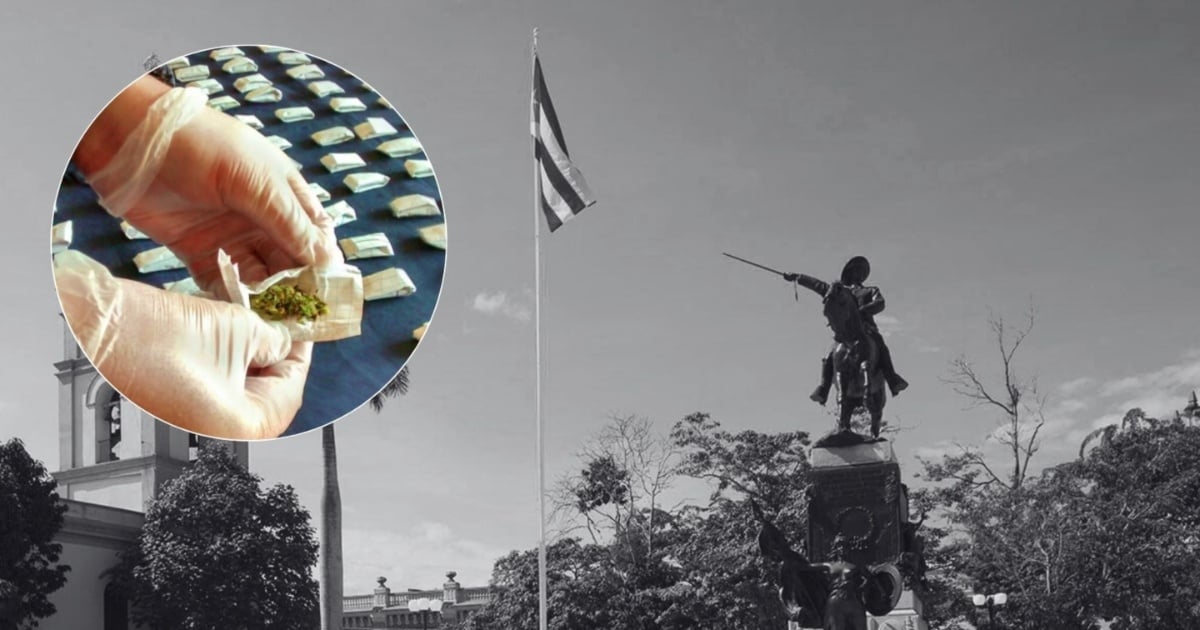The Cuban government acknowledged on Sunday that marijuana, hashish, and cocaine are being trafficked in Camagüey province, particularly in its main city, and that the region serves as a "gateway" for transporting drugs to the nation's capital. An article from the state-run local newspaper, Adelante, detailed that the trafficking and sale of marijuana, hashish, and cocaine are predominantly occurring in the provincial capital municipality, especially in eight popular councils and in the towns of Florida and Guáimaro.
According to information released by the Technical Research Department (DTI) of the Ministry of the Interior in the province, there is also ongoing trafficking and consumption of pharmaceuticals like imported Tramadol and Carbamazepine, with a smaller quantity being domestically produced. The state media emphasized that drug use has risen among young people, leading to increased prices for these substances. Alarmingly, individuals under 18 have been admitted to the Eduardo Agramonte Piña Pediatric Hospital, with some arriving in severe and critical conditions due to drug intoxication.
The Province's Role in Drug Transit
Camagüey is also being used as a strategic stopover for drugs en route to the capital. The regime's press reported, "There are fewer attempts to carry out drug operations with suppliers from Las Tunas, Granma, and Santiago de Cuba, as criminal networks use Camagüey as a gateway for transporting drugs to the capital." For distribution and supply, the authorities noted that "new information technologies," especially social media, are being employed to "evade police action."
Government's Struggle Against Drug Trade
While authorities recognize the growing issue of drug and pharmaceutical circulation in the country, they admitted that despite efforts to combat the crime, there is "no significant impact on curbing the sale of pharmaceuticals for drug addiction." They argue that most of the medications are imported, making control challenging. The Cuban regime claims to have launched a war against drug trafficking, advocating a zero-tolerance policy towards drugs.
Prime Minister Manuel Marrero Cruz emphasized that synthetic substances are entering the country through "new methods and techniques," posing a threat to the island's security. Amid recent public complaints and an increase in reports from independent media regarding the consumption of "the chemical," the Cuban government proposed establishing the National Drug Observatory (OND). This institution, directed by the Ministry of Justice (Minjus), will monitor and oversee the drug phenomenon in the island nation. Through an Early Warning System, they aim to identify new psychoactive substances and reduce the risks associated with their consumption and distribution.
Impact and Measures Against Drug Trafficking in Camagüey
What drugs are primarily trafficked in Camagüey?
Marijuana, hashish, and cocaine are the primary drugs trafficked in Camagüey, with significant operations occurring in the provincial capital and surrounding areas.
How does the Cuban government plan to combat drug trafficking?
The Cuban government has declared a war on drugs, implementing a zero-tolerance policy and proposing the establishment of the National Drug Observatory to monitor and manage the drug issue.
What role does Camagüey play in drug transit to the capital?
Camagüey acts as a key transit point or "gateway" for drugs being transported to the nation's capital, with criminal networks utilizing the province for this purpose.
